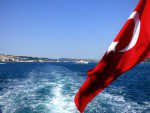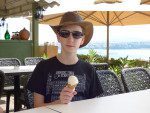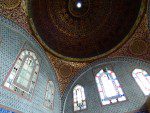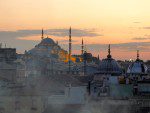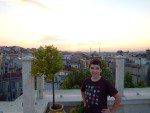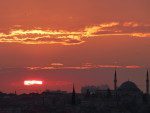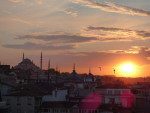The prophet’s beard and Moses’ staff
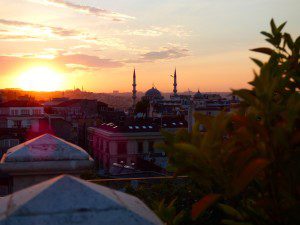
Last night we had a meal of Turkish gozleme, just to confirm that they really do exist in Turkey as they do in Sydney (they do), and then sat with a glass of wine and watched the sun set from the terrace. It’s Ramadan so the minute the sun went past the horizon the minarets came alive with lights and sound and smoke started rising from chimneys as the feasting began.
This morning we were, thanks to a window being left open, awoken by the call to prayer at 3:30am. For one morning we’ll count that as local atmosphere. But tonight we’re closing the window.
After another lovely breakfast, I have to say that Turkish food is fantastic and our hotel is doing a great job of serving up tons of it at a great quality, we set out for the Topkapi Palace. Istanbul is beautiful and redolent with history, but it’s only when you visit the palaces that it really hits you that it was the heart of an immensely rich empire for centuries. The Topkapi was the home of the sultans from the 1400s to the mid-1800s and it is huge, and sprawling, and beautiful, and intricate, and ornate, and completely lacking in modern conveniences. That last one explains why the built an even bigger, but much more modern palace and moved to it in the mid-1800s. But the Topkapi Palace really drives home the scale of the Ottoman Empire.
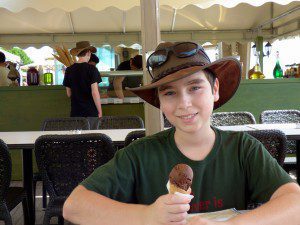
When you say ‘palace’ you think of a building, however the Topkapi is more analogous to the Forbidden City in Beijing than a Western palace. It’s a sprawling complex of buildings and courtyards and gardens that provided both a home for the Sultans and an administrative centre for the empire. The rooms are in one sense quite stark, now at least, with no soft furnishings, but the tiled walls are richly lovely.
We stopped for ice-cream on a terrace overlooking the Bosphorus; and then joined a ridiculously long queue to visit the Treasury. Which turned out to be one room with a few huge diamonds and emeralds in it. Far more interesting was a room on the other side of the courtyard that had no queue at all but was stacked with fascinating religious relics. We saw Moses staff – yes, the one he parted the Red Sea with – Mohammed’s beard – by the beard of the prophet – and several bits of other famous religious characters who we hoped were only removed when they no longer needed them.
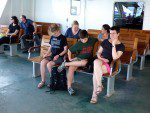
This afternoon we took a cruise out to the Bosphorus. The Bosphorus is a strange mix of sea and river – technically it’s not a river but the parallel banks makes it feel a lot like one. Seeing Istanbul from the waters is another way of recognising the depth of richness that persists even to today. The banks of the Bosphorus are lined with the ‘sea-side residences’, or holiday homes, of rich locals and have been for centuries. The contrast of the palatial buildings with the working passage that is the modern Bosphorus is mesmerising; at least if you’re over the age of 13. I think the boys are going to be using the phrase ‘sea-side residences’ for something so repetitive that it becomes boring for a while.
